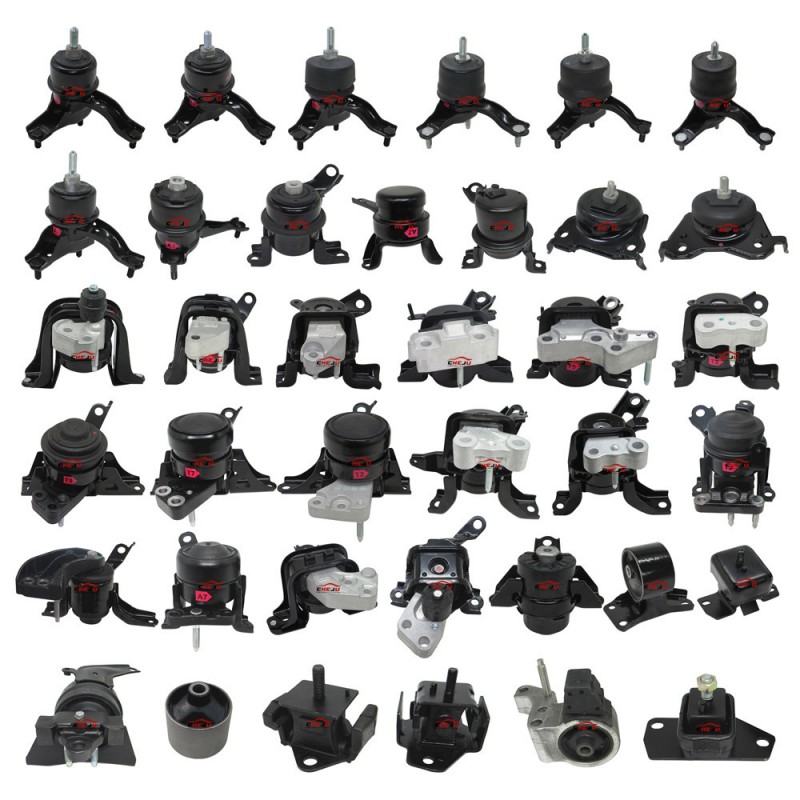The features of Engine Mountings
2025-05-26
Engine mountings are critical components in vehicles and machinery that secure the engine to the chassis or frame, isolating vibrations and absorbing shocks. Here's a detailed overview of their key features:
Key Features of Engine Mountings
1. Vibration Damping
Designed to absorb and isolate engine vibrations, preventing them from transferring to the vehicle body.
Enhances ride comfort and reduces cabin noise.
2. Shock Absorption
Engine mountings cushion the engine during jerks, bumps, and acceleration/deceleration.
Helps protect both the engine and the chassis from mechanical shock.
3. Durability and Strength
Built to withstand engine torque, heat, oil exposure, and environmental stress.
Materials typically used: natural rubber, synthetic rubber, and metal composites.
4. Alignment and Stability
Maintain the correct alignment of the engine within the engine bay.
Essential for drivetrain efficiency and smooth transmission of power.
5. Noise Reduction
Especially in hydraulic engine mounts, which use fluid to dampen high-frequency noise.
Contributes to NVH (Noise, Vibration, Harshness) control.
6. Types of Mountings
Rubber Mounts: Simple, cost-effective, used in most vehicles.
Hydraulic Mounts: Filled with fluid for superior damping; used in modern cars.
Electronic/Active Mounts: Use sensors and actuators to adapt to engine behavior in real-time.
7. Corrosion Resistance
Often coated or treated to withstand corrosive environments, especially in off-road or marine applications.
8. Thermal Resistance
Engine mounts are exposed to high operating temperatures, so materials are chosen to resist degradation due to heat.

Applications
Passenger vehicles (cars, SUVs)
Commercial vehicles (trucks, buses)
Industrial machinery
Marine engines
Generators
Common Signs of Faulty Engine Mounts
Excessive engine vibration
Clunking noises during acceleration or braking
Misalignment of engine or drivetrain
Visible cracks or wear on the rubber component
If you are interested in our products or have any questions, please feel free to contact us and we will reply you within 24 hours.